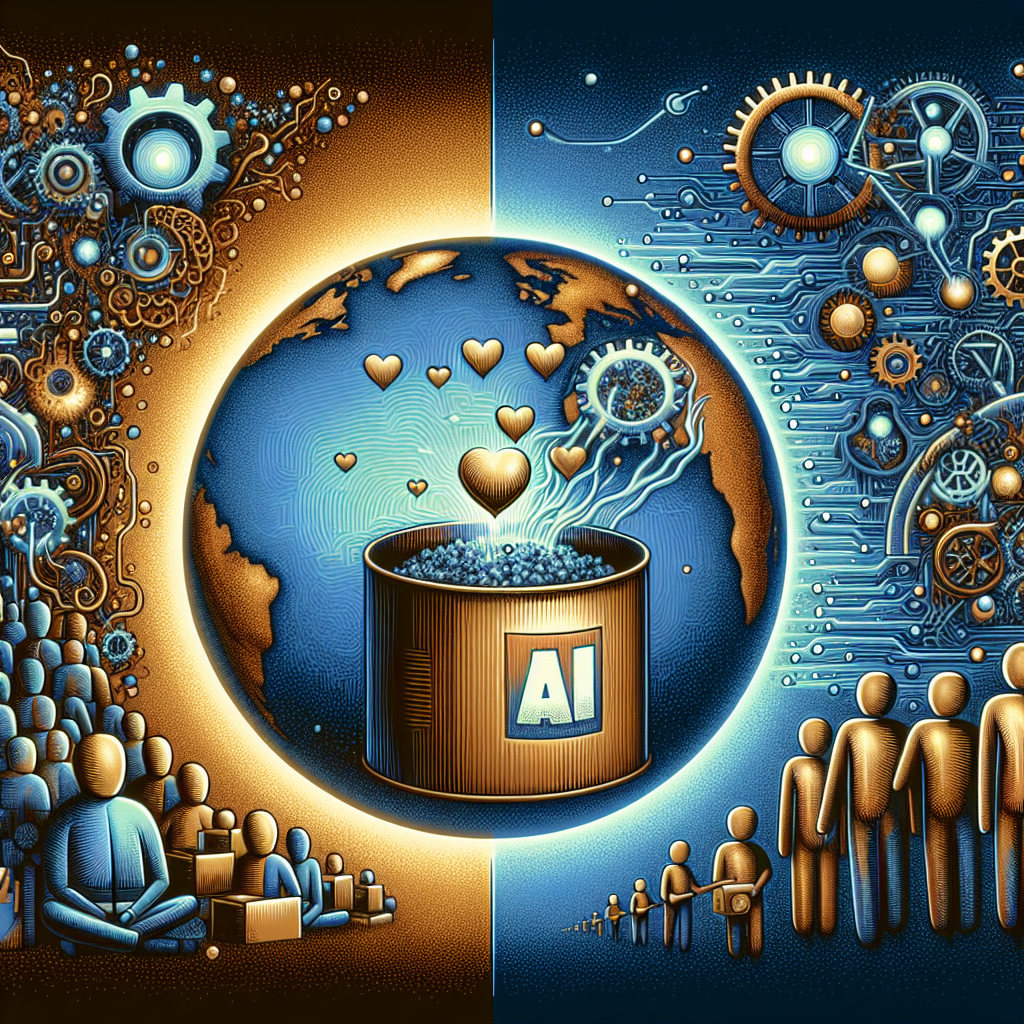In recent years, artificial intelligence (AI) has been making significant strides in reshaping various industries, including philanthropy. AI technology has the potential to revolutionize the way philanthropic organizations operate and make decisions, ultimately leading to a more efficient and impactful approach to giving back to society. In this article, we will explore how AI is transforming the landscape of philanthropy, and how it is helping organizations to better serve their communities.
AI and Altruism: The Basics
Artificial intelligence refers to the simulation of human intelligence processes by machines, including learning, reasoning, and self-correction. In the context of philanthropy, AI can be used to analyze vast amounts of data, identify trends and patterns, and make predictions to help organizations make informed decisions about where to allocate resources.
One of the key ways in which AI is reshaping philanthropy is through the use of predictive analytics. By analyzing past giving patterns and other relevant data, AI algorithms can help organizations identify potential donors, predict donation amounts, and even forecast future trends in charitable giving. This can help organizations better target their fundraising efforts and maximize their impact.
Another way in which AI is transforming philanthropy is through the use of chatbots and virtual assistants. These AI-powered tools can help organizations engage with donors more effectively, answer questions, and provide personalized recommendations for giving. By automating routine tasks and providing real-time support, these tools can help organizations streamline their operations and improve donor satisfaction.
In addition to predictive analytics and chatbots, AI is also being used to improve the efficiency of grantmaking processes. By automating the review and approval of grant applications, AI can help organizations reduce administrative overhead and speed up the decision-making process. This allows philanthropic organizations to focus more on their mission and less on paperwork.
Overall, AI has the potential to revolutionize the way philanthropic organizations operate, enabling them to make more informed decisions, engage with donors more effectively, and ultimately have a greater impact on the communities they serve.
FAQs
Q: How is AI being used to identify potential donors?
A: AI algorithms can analyze vast amounts of data to identify potential donors based on their past giving patterns, demographics, and other relevant factors. By using predictive analytics, organizations can target their fundraising efforts more effectively and maximize their impact.
Q: How can chatbots and virtual assistants help philanthropic organizations?
A: Chatbots and virtual assistants powered by AI can help organizations engage with donors more effectively, provide real-time support, and automate routine tasks such as answering questions and providing personalized recommendations for giving. This can help organizations streamline their operations and improve donor satisfaction.
Q: How is AI improving the efficiency of grantmaking processes?
A: AI can automate the review and approval of grant applications, reducing administrative overhead and speeding up the decision-making process. This allows philanthropic organizations to focus more on their mission and less on paperwork, ultimately enabling them to have a greater impact on the communities they serve.
Q: What are some potential challenges of using AI in philanthropy?
A: While AI has the potential to revolutionize philanthropy, there are also some potential challenges to consider. These include concerns about data privacy and security, the potential for bias in AI algorithms, and the need for organizations to invest in training and infrastructure to fully leverage the benefits of AI technology.
In conclusion, AI is reshaping the landscape of philanthropy by enabling organizations to make more informed decisions, engage with donors more effectively, and improve the efficiency of their operations. By leveraging the power of AI technology, philanthropic organizations can have a greater impact on the communities they serve and ultimately make the world a better place.

